Last Updated on 16th November 2023 by nightowl
This modification project started over a year ago. I placed an order for a Baader Diamond Steeltrack NT focuser in the beginning of September 2020 but due to the pandemic I had to wait for about 9 months before I finally had one. After it arrived I wanted to motorise it before attempting to install it onto my scope. That was a project on its own. You can read more about it here.
With the optional 2″ Clicklock S58 adapter the combination was going to be protruding out considerably more than my old SkyWatcher Low Profile crayford focuser. I would have not been able to achieve focus with my usual imaging train so some modifications were necessary. Furthermore I wanted to make sure that the new focuser tube was not going to be in front of the primary mirror when in focus.
Using the Newt For Web calculator I concluded I must shorten the distance between the primary and secondary mirror about 35mm in order to push the focal plane outside the tube enough. My initial thought was to cut a new hole for the new focuser lower down the tube. This would have allowed me to go back if necessary but as pointed out to me here, it would have also weakened the rigidity of the tube at a fairly crucial section. With this in mind I decided to go with the more permanent solution of moving the primary mirror closer to the secondary by shortening the length of the tube.
While doing the calculations with the Newt For Web I realised the stock 58mm (minor axis) secondary mirror was too small to admit 100% ray. This has manifested itself in the past as quite prominent vignetting in my sub-exposures. Since I was taking the whole OTA apart anyway I decided to replace the secondary mirror with a larger one as well. I decided to go with an Orion Optics 75mm secondary. By doing so I’m sacrificing a little bit of contrast but gaining more evenly illuminated frames when using larger camera sensors.
Table of Contents
Cutting The Tube
To cut the tube I designed and 3D printed a flange guider for my Dremel 300 that allowed me to set the cutting depth and also run it along the inside of the tube.
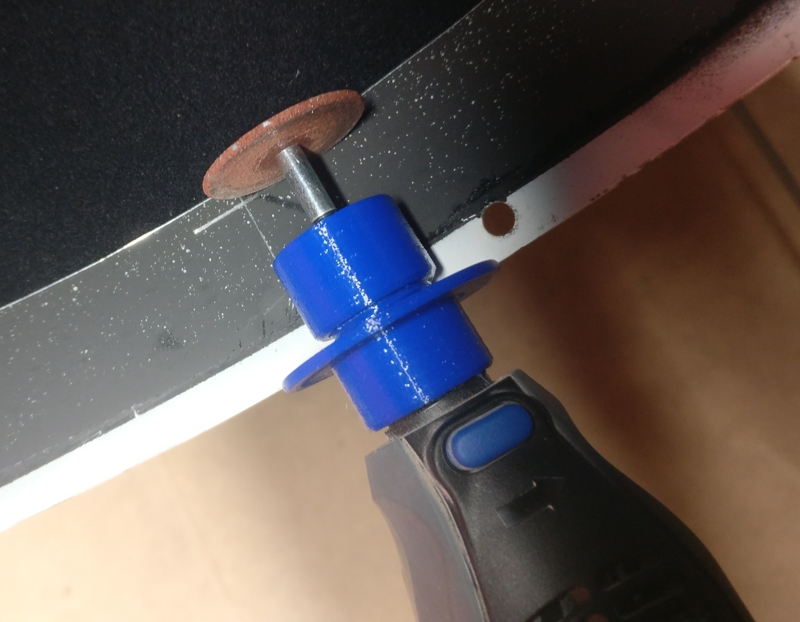
It took me about 20-30 minutes to do the cut. I had to change the cutting disc twice as it wore down quite quickly. I do have an angle grinder as well which would have done the cut a lot quicker but most likely not as accurately. On hind sight I got the job done but if I had to do it again I might reconsider using the angle grinder with some kind of a jig. Possibly clamping the grinder down on a bench and rotating the OTA around against it within the (loosened) tube rings or something like that…
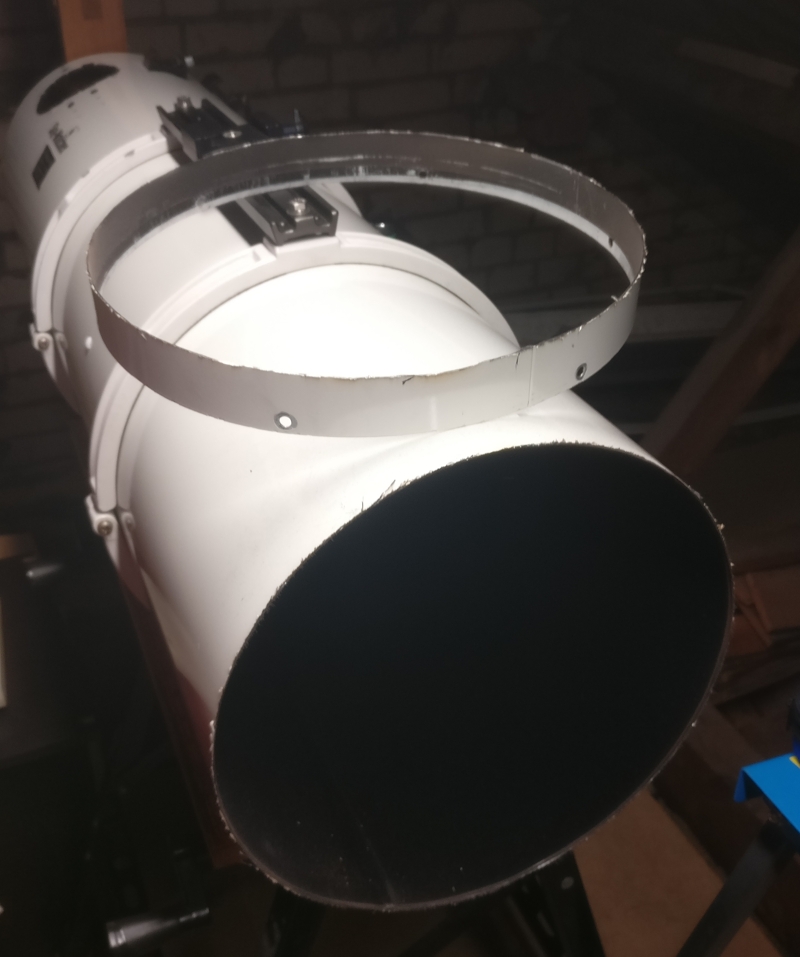
After the cut I sanded down the rough edges and vacuumed the inside of the tube to make sure there was no metal shavings/debris on the velvety flocking material I’ve previously added. You definitely don’t want to have that stuff ending up on your primary mirror!
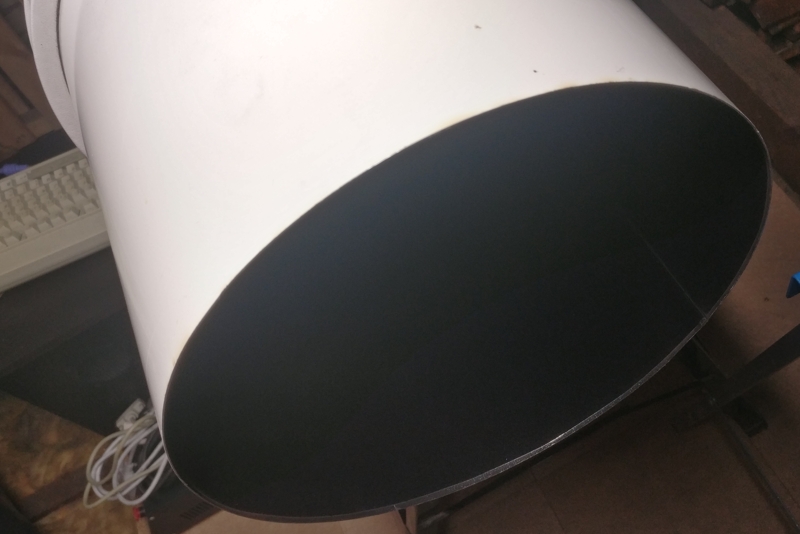
Using the old holes for the primary mirror cell I measured the distance between them along the circumference and printed out matching templates. I taped them together and then onto the outside of the tube. I used a punch to mark the starts of the wholes before drilling to make sure the drill bit isn’t going to wander around.
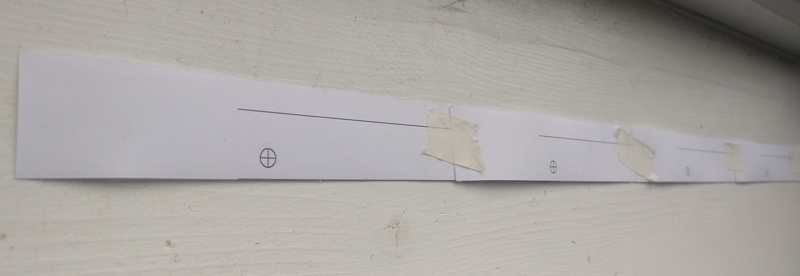
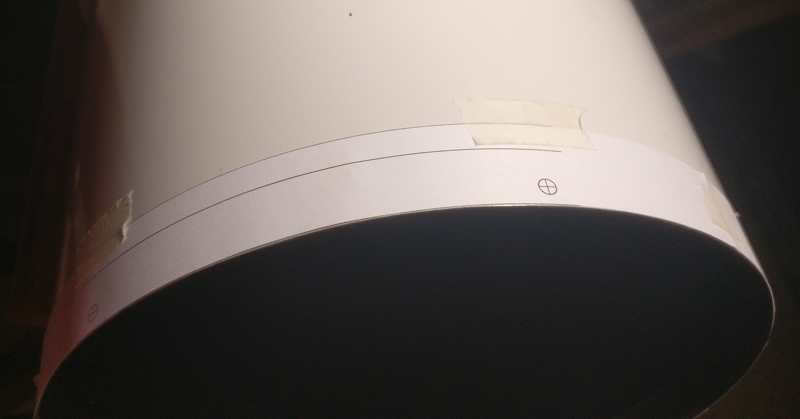
With the holes drilled slightly over size (0.5mm) it was fairly easy to mount the mirror cell on the shortened tube again. In case you’re wondering I have previously changed the stock M4 screws with M5 socket head ones along with installing V-Coil thread inserts on the mirror cell. This makes it much more durable than just screwing directly into the cast aluminium.
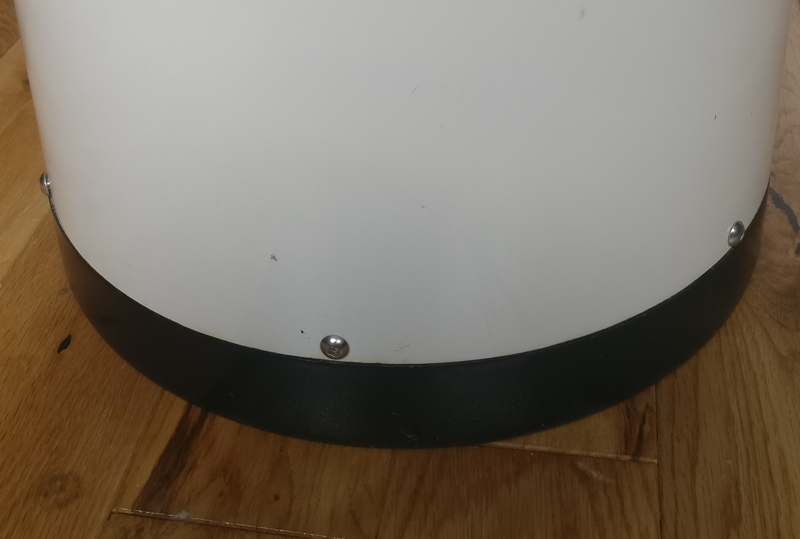
Secondary Mirror
Here’s a size comparison between the new and old secondary mirror.
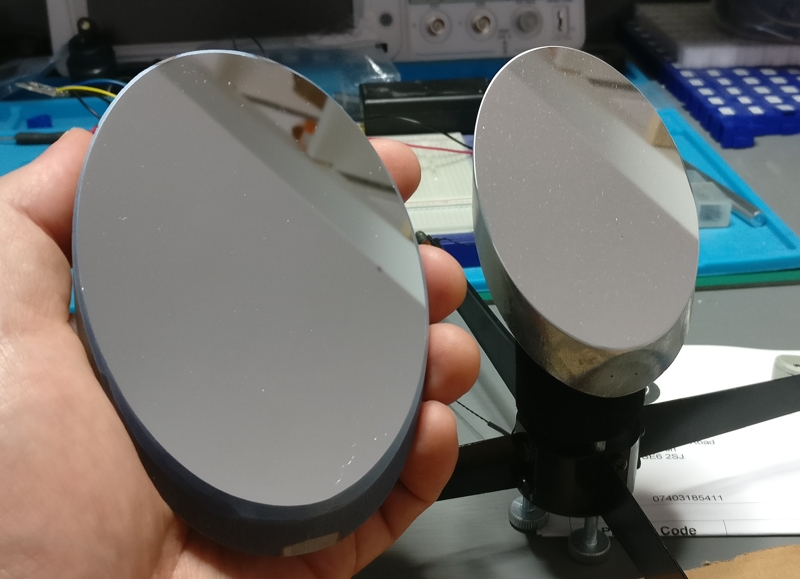
I used an utility knife with a long thin blade and some gentle but firm twisting force to remove the old secondary mirror from its holder. Using the information on this page I printed and cut out a template for attaching the new secondary in the correct place with an offset.
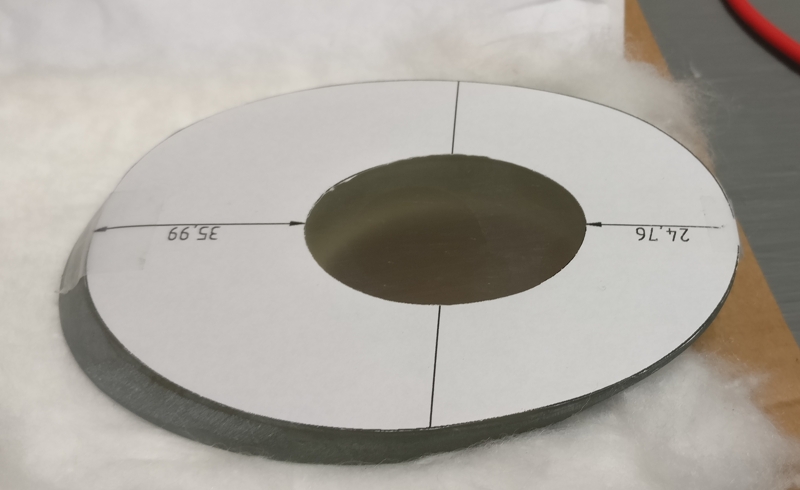
To attach the new mirror I used some 3M VHB double sided padded tape cut to size. In case you’re wondering what that little black blobby thing with wires sticking out the holder is: It’s a 10K / 1% precision NTC thermistor which I will attach to the back of the secondary mirror to measure its temperature. I’ve also wrapped some Nichrome wire around the mirror holder to form a 5W dew heater.
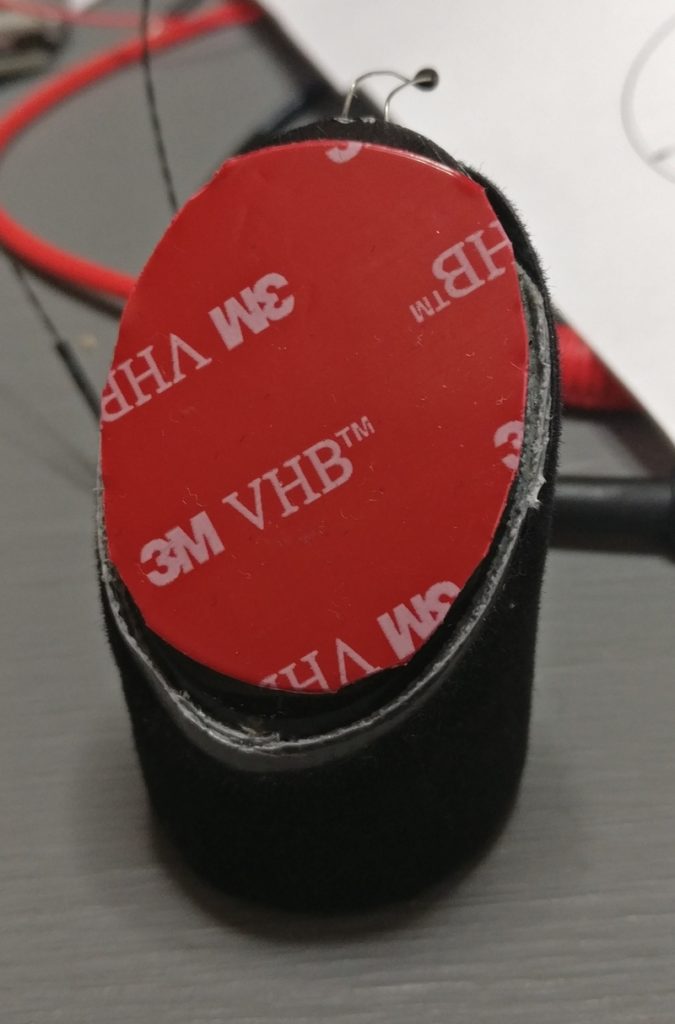
The thin enamelled wires for the heater and the temperature sensor will eventually run along the spider vanes outside the OTA to connectors for further wiring. I haven’t really made use of the thermistor yet but in theory this would allow me to have a dew controller heating up the secondary only when needed i.e. the secondary mirror being cooler than the dew point. This is one of my too many unfinished projects though. For now I’m just happy enough having the new secondary mirror attached 🙂
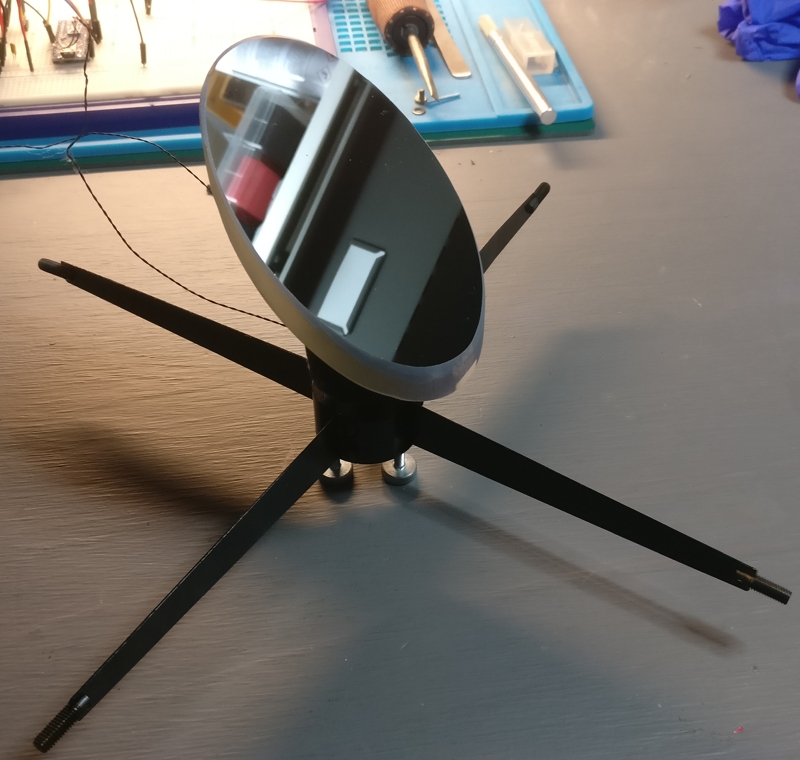
Installing The Focuser
After doing some basic measurements on the new focuser I printed out a template and taped it on to the OTA. Lighting up the paper from underneath with a torch helped to get it in the right place. The way the Baader focuser base plate has been designed allows to adjust the position of the focuser a little bit along the length of the tube.
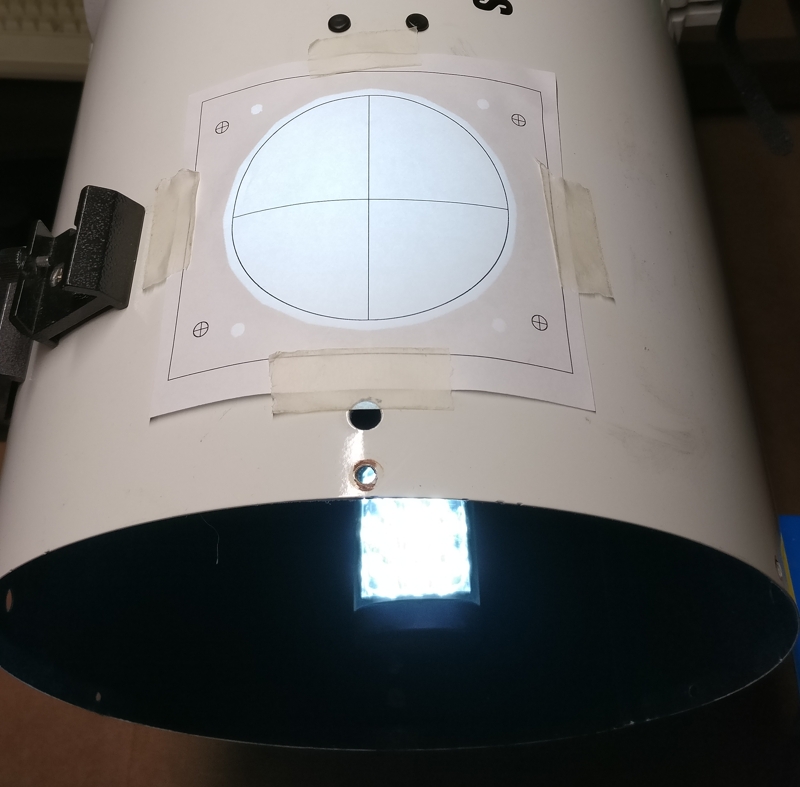
With the new screw holes drilled installing the focuser was fairly trivial with the supplied screws and attachment bits. My DIY BullsEye Focuser sits nicely under the body of the focuser with the temperature sensor screwed onto one of the existing holes on the base plate.
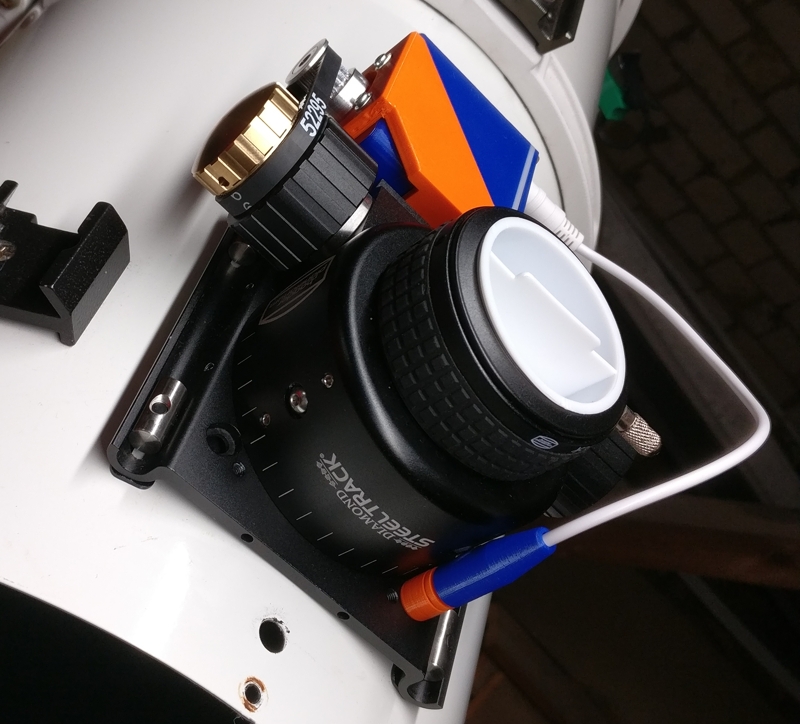
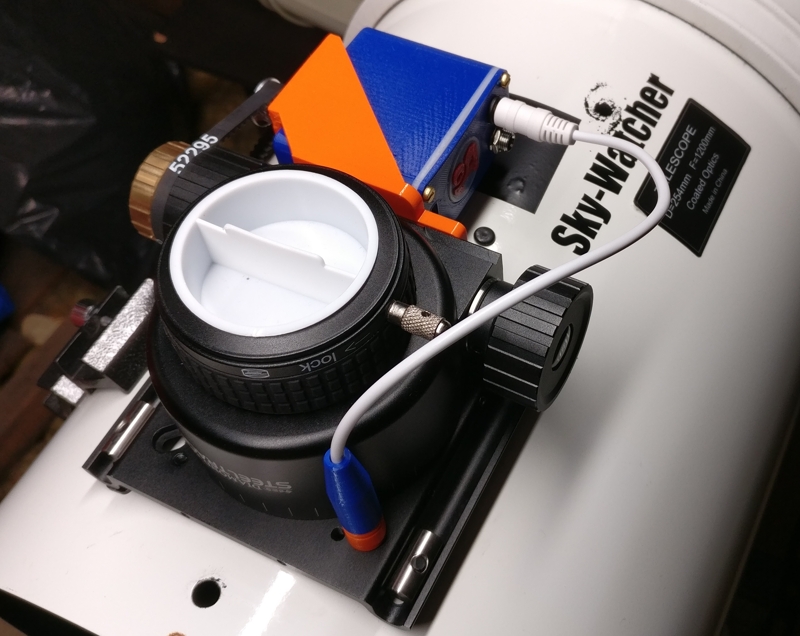
Alignment and Collimation
I have to admit this is an area where I struggle a little bit. After all these modifications and taking everything apart it’s actually rather tricky to get the secondary mirror back in the right place and orientation. It took me about three iterations to get anywhere close to an acceptable result. I haven’t got photos of all the steps I did but here’s roughly what I did:
- Centre the secondary mirror holder within the OTA (i.e. align it with the main optical axis) using the spider vane adjustment nuts/knobs.
- Adjust the depth of the secondary mirror so that the offset centre is intersecting the centre of the focuser tube.
- Adjust the rotation of the secondary mirror around the main optical axis so that it’s facing straight at the focuser.
- Adjust the tilt of the secondary mirror using the adjustment knobs on the holder with a laser collimator until the laser hits the centre of the primary mirror.
- Adjust the primary mirror with a cheshire eyepiece until everything aligns properly.
- Double check with the laser collimator again to see whether it agrees with the step above.
- Take some flat calibration frames to check for any uneven vignetting.
- Repeat the above steps until you’re happy.
For centring the the secondary holder within the OTA I 3D printed this simple ruler that fits snugly inside the tube. I could then easily see whether the centre of the screw holding the mirror holder is aligned with the centre hole on the ruler. Do this twice with rotating the ruler 90 degrees and you should be fairly close. It is best to double check
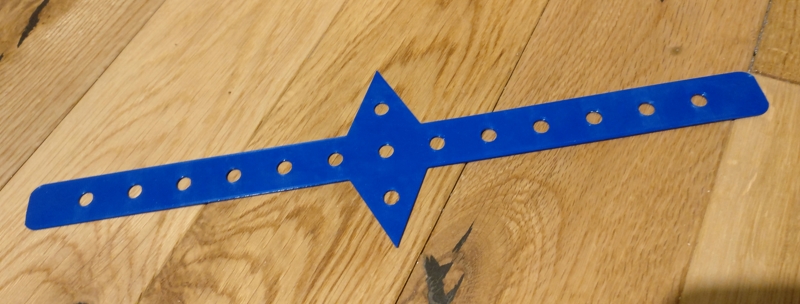
I printed and cut out yet another template and loosely taped it onto the secondary mirror. The template is using the same offset as above. I’m not 100% sure whether this is actually correct but it got me very close to the perfect result.
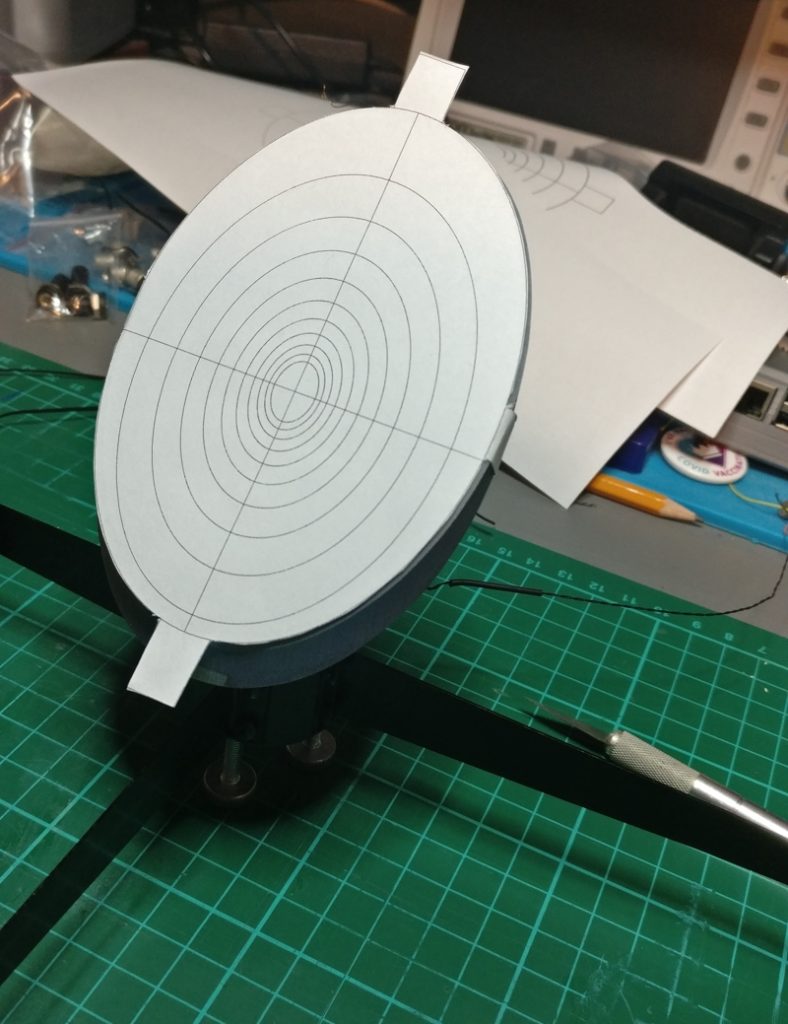
Here’s a photo taken with my QHY5L-II guider camera in the focuser with a small 4mm CCTV lens attached to it (similar to this one).
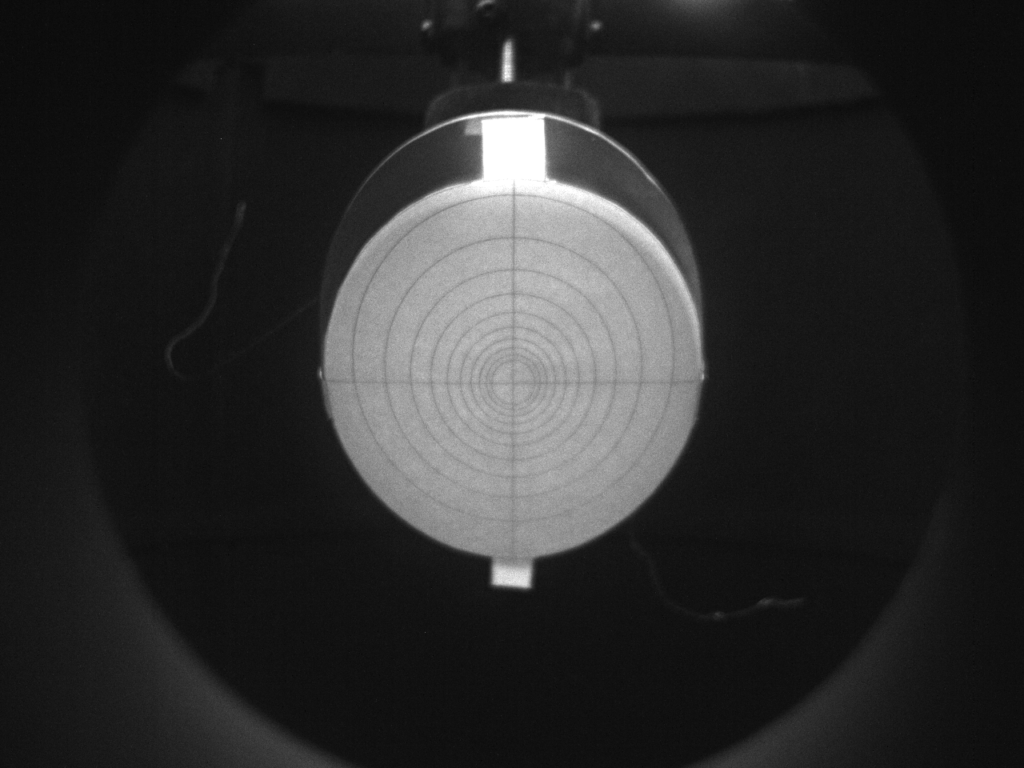
After fiddling about
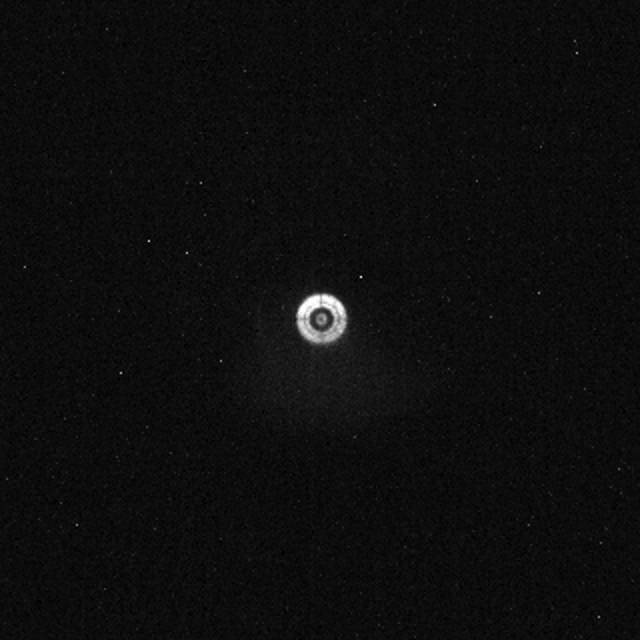
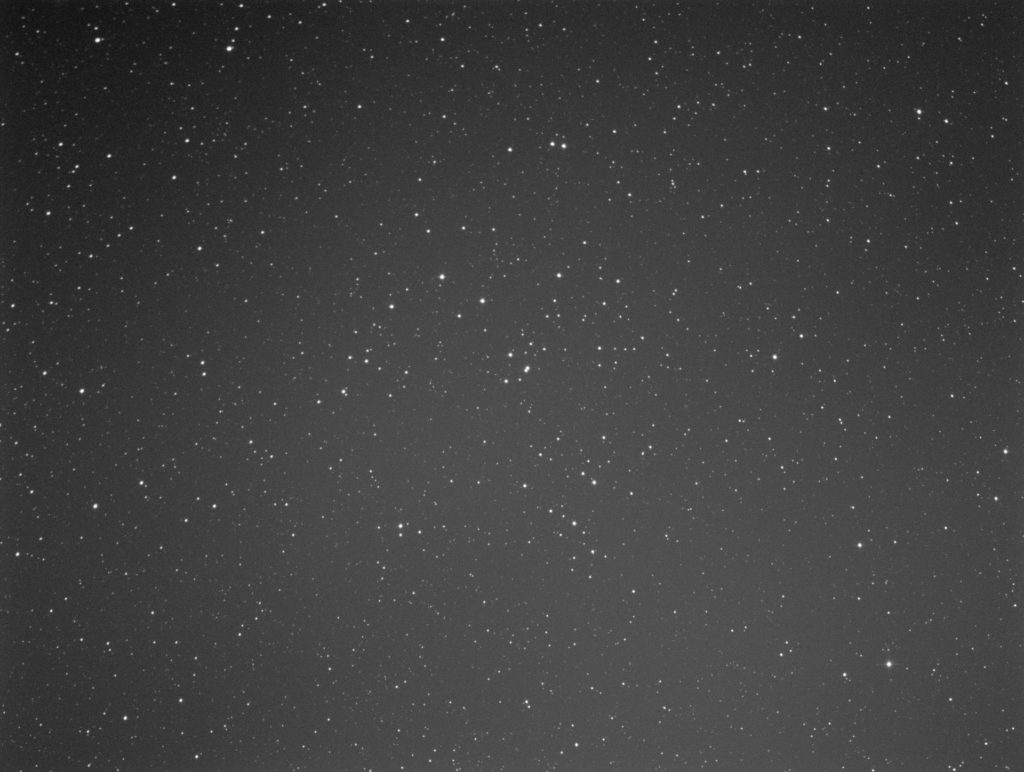
Have you tried ArduFocus?
I have not. I designed my first autofocuser years and years ago and then eventually re-designed it to the BullsEye focuser which I’ve been successfully using on both of my scopes for a long time.